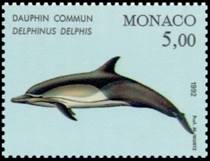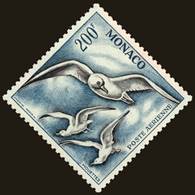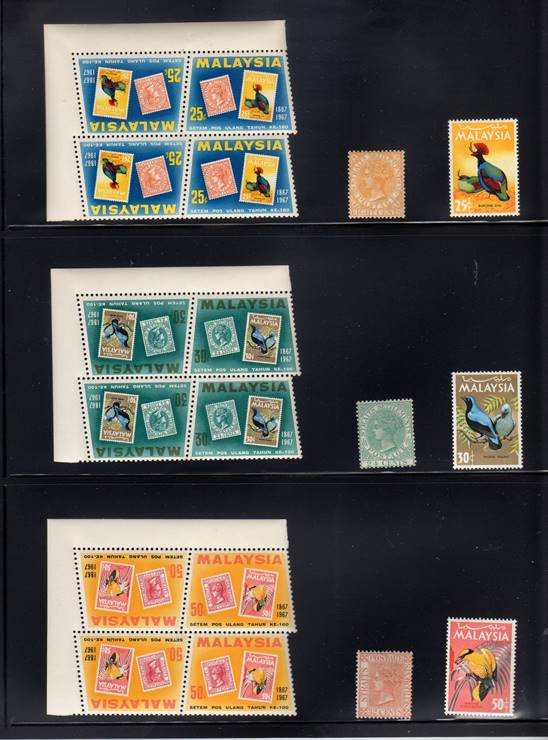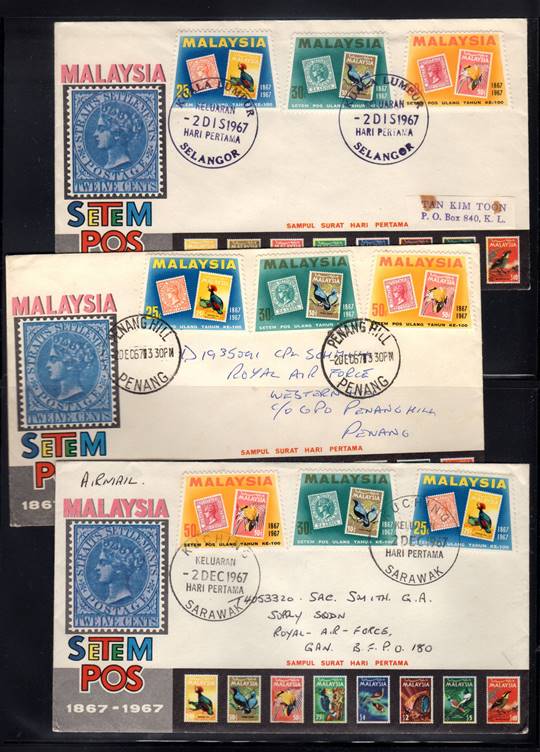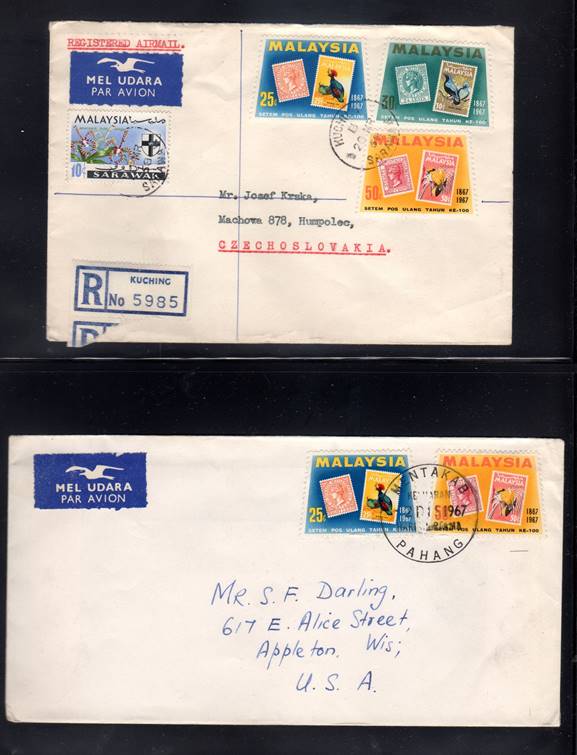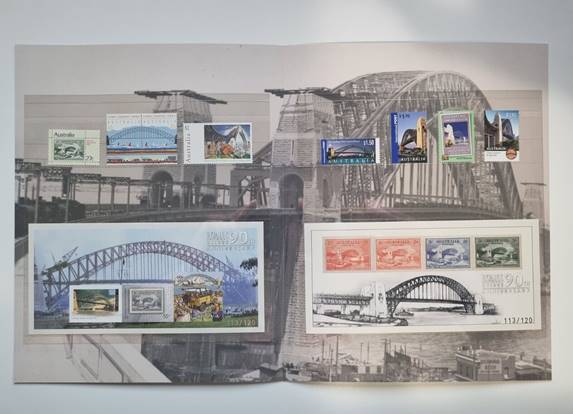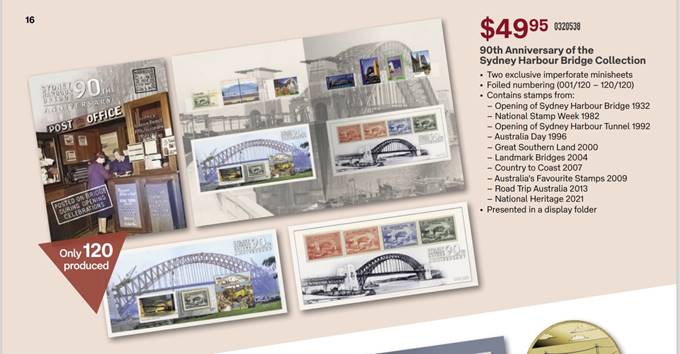|
STAMPS ON STAMPS COLLECTORS CLUB |
|
THE FIRST PAGE |
|
From time to time, we upload
short articles or interesting comments sent to us by members of the club or
others on the home page (first page) of the website. In order not to put too much on
the first page, after changing the content on the home page we will continue
to publish the same content on this page. You are of course welcome to write us new content at any time. |
|
The longest stamp (6/2024)
Philippines –
2024 On June
12, 2024, the Philippines issued a stamp to commemorate the 125th
Anniversary of the First Philippine Republic. The
special stamp produced by the PHL Post is 35 x 200 mm long (about 7.5"),
and has set a new Guinness World record for the longest stamp. After the
defeat of the Spanish military in 1898 by the U.S., the Filipino
revolutionaries that had fought the Spanish government, expected independence
for their country, but found they had just traded the Spanish for American
rule. General Emilio Aguinaldo, a revolutionary leader, started a
guerrilla war against the U. S. Army, and in the areas under his control set
up a working government with a postal service. In late 1898 stamps were printed and used on
mails, well before the actual republic was proclaimed by him in
June 1899. Bitter fighting went on until 1901 when Aguinaldo was captured and executed. The U. S.
long term intention for the Philippines was to
prepare it for independence, which interrupted by WWII, was finally
achieved in 1946.
Filipino Republic Y1 1898-99
Filipino Republic Y2 1898-99
Filipino Republic Y3 1898-99
Filipino Republic YF1 registration1898-99 In the
left and right ends of the long stamp are
examples of the first four stamps, known as the Aguinaldos,
issued by the first Filipino Republic. In the center are visual
events in the history of the First Republic. All in
all, a very unusual, colorful and interesting SoS.
Happy
Stamp on Stamp Collecting, Lou
Guadagno |
|
A stamp with 2 first days of Issue (2/2024)
Germany #1017 SABRIA '70 Germany #1017,
the SoS issued to publicize the Sabria 70 National Stamp Exhibition held in Saarbrucken,
Germany to celebrate the 50th anniversary of Saar stamps, had two
official first days of issue. On April
24.1970 it was issued and sold only at the exhibition; on
May 4, 1970, the closing day of the exhibition, it was available
for sale thruout Germany. The cancels for both
dates read ERSTAUSGABE - first issue. Many cacheted first day covers were
issued for both dates, and I have a number in my collection, but I
will just show just few representative items and one oddity.
FDC: Saarbrucken 29.4.70 cancel
FDC: Saarbrucken 29.4.70 cancel
FDC: Bonn 4.5.70 cancel with cachet that notes the dual issue and
reproduces both commemorative cancels
FDC: Bonn 29.4.70 cancel The
oddity is a cover with ordinary Bonn post office 29.4.70
postmarks, the first day in Saarbrucken but well before the
intended first day in Germany proper. Technically, the stamp was an
official German issue on that date, and, since it is an unaddressed cover, it
appears a clerk in the post office applied the post
mark and handed it back to the collector without any thought. It is
possible the cachet was added later. I have to
admit I bought the cover at a NY stamp show in the early
'70s because of the fancy cachet noting the 50th
anniversary and not the exhibition, and it wasn't
until much later that I realized what I had. Sometimes you get
lucky. I have
never seen one, but I can't believe that another
clever collector hadn't made a combo cover with two stamps and two first
days, so I will keep looking for one. Happy
Stamp on Stamp Collecting, Lou
Guadagno |
|
Chile Mint Christmas CarD (10/2023)
Recent
offers online reminded me that I had an unusual stamp on stamp Christmas
card in my collection. Being the season, I decided to share it with you all. Many
posts around the world sent/send season's greeting cards to collectors who
had yearly new issue subscriptions, and several have reproductions of stamps
on them. I have acquired several, but this Chile card is my
favorite. 1968, the
year this card was sent out, was also the year that the Chile
mint celebrated its 225th anniversary, with a set of four
stamps--one reproducing the first coin minted in Chile, and another, a
stamp on stamp, reproducing the first stamp printed by the mint in 1912 (Sc #C288-C289) The card
is on cream colored stock and the face, with burgundy imprints, has a large
seal, "CASA DE MONEDA" in an ornate scrollwork and the date,
"DECIEMBRE 1968" in smaller typeface. The
message page is what makes the card special. The two stamps mentioned above
are imprinted imperforate, from the same plates and in the issued colors.
They are unique. The
greeting is below, in pretty lettering: "La Casa de Moneda
le desea Felices Pascuas y Prospero Ano Nuevo". My barely
remembered high school Spanish, and later Google search, translated
"Felices Pascuas"
to "Happy Easter", which did not make sense to me as I expected
"Feliz Navidad",
but I figured it couldn't be an error. Recently,
I showed this card to Club member, Michael Merritt; he whipped out
his I-phone, typed in translate "Felices Pascuas" and got a message that said it was also a
shortened version of "Felices Pascuas de Navidad"--"Merry
Christmas". I
remember being a bit reluctant when buying the card, as I was then, a
new stamp on stamp collector, and the price would have bought a lot of needed issues, but I was always drawn to the
unusual over the normal. It turned out to be a good buy, as the two offerings
were for four times what I paid! Happy
Holidays and Happy SoS Collecting in the New year! Lou
Guadagno |
|
On the 28th
of March 2023, the post of Israel issued a series of stamps on international mail
from the Land of Israel. An interesting combination of history of the post,
geopolitics, transportation, view of Israel and other relates elements. It is
more about mail in the Middle East - an area that was a remote desert than on
mail from the Land of Israel itself, but nevertheless, it is a very
interesting stamps series and most important it is a Stamps
on Stamps series.
International
mail from the Land of Israel, Issued: 28.3.2023 Immediately
after the publication of the stamps and after a quick identification of the
stamps, a discussion began among the members of the club regarding the design
of the stamps and the choice, which at first glance seems unnatural, of the
envelopes that are not actually mailed from the Land
of Israel. I sent
the questions from our discussion to the designer of the stamp Mr. Zvika Roitman, who directed the
questions to Israel Post. Within few days, I received an in-depth,
comprehensive answer from Mr. Moshe Rimer who is
the treasurer of the collection of the late Alexander Zvi,
kept in the Alexander Museum of Postal and Stamp History in Tel Aviv. https://www.eretzmuseum.org.il/e/122/ Mr. Rimer was also kind enough to send me copies of the
envelopes used to design the stamps and they are shown
here courtesy of the Alexander Collection. Here is a
free translation of Mr. Rimer's extensive answer to
the questions that came up in the discussion among the club members as well
as additional information about the thoughts behind the spectacular design of
the stamps in the series. International
mail from the Land of Israel In the
period to which the first stamp in the series refers, the one dealing with the
development of maritime mail relations, the Land of Israel was nothing more
than a remote and insignificant province of the vast Ottoman Empire. Even
during the British Mandate period, in which the other two stamps in the
series are anchored, the Land of Israel (despite its
official definition as a separate entity called Palestine) was part of a much
larger territorial unit that stretched from Egypt in the west, through
Mesopotamia to India and Australia in the Far East. The development of
international postal relations was made out of a
system of considerations that went beyond the limits of the limited Land of
Israel, and was largely derived from the imperial system of considerations of
Great Britain. The
choice of the envelopes that were incorporated into
the stamps of the series was made with deep thought on the way in which they
illustrate the position of the Land of Israel as an international crossroads.
With the exception of the first envelope, which was sent
from Jerusalem, the two envelopes from the British era were not sent from the
Land of Israel, nor were they sent to the Land of Israel as a final address,
but passed through the Land of Israel as part of the global routing system.
The envelopes were carefully selected from the huge
variety kept in the collection of the late Alexander Zvi,
which was deposited by him in the Alexander Museum of Postal History and
Stamps in Tel Aviv. Also the landscape postcards
integrated into the design of the stamps, which describe the points of the
settlement in which the international postal services operated, originating
from the collection of the late Alexander Zvi. ********************* Sea mail
Envelope from Jerusalem to France (1853) The
publication is made with the permission of the collection of the late
Alexander Zvi, kept in the Alexander Museum of Postal and Stamp History in Tel
Aviv The first
stamp in the series focuses on the mid-fifties of the nineteenth century, a
period in which the shipping companies of Austria, France and Russia began to
visit the ports of Israel as part of the regular shipping lines that left the
mother countries and sailed to the eastern Mediterranean. This is in the
pre-stamp era, so the folded letter chosen for presentation on the Israeli
stamp has no postage stamps. The folded letter was sent on August 14, 1853 at
the French post office in Jerusalem, and was transferred to the French post
office in Jaffa, where it was stamped The rare
stamp of this post office. The letter was routed through
the port of Beirut and arrived at the port of Marseille in France on
September 6, 1853. In addition,
a stamp of the Austrian Post Office in Jaffa was
incorporated into the stamp's back and a photo of the Russian mail
ship "Chihachov" which ran aground on the
Jaffa coast was incorporated into the center of the stamp. ********************* Overland mail
Envelope from the First Overland Mail Bagdad – Haifa
(1923) The publication
is made with the permission of the collection of the late Alexander Zvi, kept in the Alexander Museum of Postal and Stamp History in Tel
Aviv
The
second stamp deals with the development of a unique land mail line, initiated
by the brothers Norman and Gerald Nairn. The two
brothers arrived in Israel as part of the British army in the First World
War, and decided to settle there. They were engaged in the development of
land transportation lines based on cars, which were a modern and less known
means of transportation at that time. In 1921 they
established a daily mail, cargo and passenger transport service from Haifa to
Beirut, and in light of the success of the service they decided to expand it
and establish a transportation line that would cross the arid and dangerous
Syrian desert, and lead from Haifa (the terminus of the railway line from
Egypt) through Beirut and Damascus to Baghdad (the terminus of lines the
shipping that led along the rivers of Mesopotamia and the Persian Gulf to India). The development of the transportation line involved a long series
of difficulties of various kinds, starting with the signing of political
agreements between the authorities of the British Mandate (which controlled
the Land of Israel and Iraq) and between the authorities of the French
Mandate (which controlled Lebanon and Syria), through the signing of
agreements with the Bedouin tribes who collected patronage fees in the
territories of the Syrian desert, And including technical problems of
navigation and supplies along the long deserted road. On August
30, 1923, a special trip left Baghdad for Haifa that was intended
to be used as proof of the applicability of the continental mail line
to the postal authorities, and based on the success of this trip, the
official contract was signed on October 18, 1923 between the British Post
Office and the company of the Nairn brothers.
Letters from this trip are extremely rare, and for
the purpose of presentation on the Israeli stamp, a registered letter sent on
this test trip from Baghdad to Haifa, and intended for an address in England,
was chosen. Two Iraqi stamps with a total face value of 9 Annas
were affixed to the envelope (3 Annas for sending a
regular letter from Iraq to England + 3 Annas for
the registration fee of the letter + 3 Annas for
the additional payment for the special service of the mainland mail). I repeat
and emphasize that the letter was not sent from Iraq
to Israel, but from Iraq to Britain, and the Land of Israel was only a
transit station that served as the terminus of the overland mail Haifa -
Baghdad. The complete line of mail delivery included
departure from Baghdad by land mail to Haifa, loading the mail on the railway
line to Egypt, and from there by ship on one of the routes to Southern Europe
(mostly France or Italy), from there by train to the ports of the Lemanche Canal, from there by ferry to Britain and from
there by train to London. ********************* Air mail
Envelope from the First Flight Cyprus to India (1932) The
publication is made with the permission of the collection of the late
Alexander Zvi, kept in the Alexander Museum of Postal and Stamp History in Tel
Aviv
The
development of air traffic lines in the 1920s and 1930s involved very
difficult problems, both technical problems that arose from the limited capabilities
of the planes in those days and political problems that arose from the need
to sign appropriate agreements with the various political authorities through
which the air route passed. The location of the Land of Israel placed it as a
key point on the long way from Britain to the Far East, and especially to
India and Australia. Over the years, various sites in the Land of Israel,
such as Gaza, Lod, Haifa and Tiberias,
have been used as transition points for the landing
and routing of cargo and passengers. On the Israeli stamp, it was decided to show as an example one of the routes along
the line between Great Britain and India, the one that connected Cyprus and Tiberias. This line operated for a short period only, and
was canceled due to lack of economic viability.
There are very few items of mail sent in this line, and one of them is preserved in the Alexander collection and is shown on
the Israeli stamp. It is important to remember that the modern concept that
we are used to today, according to which a passenger on an airline from
Britain to India boards a plane in London and does not get up from his seat
until he lands in Mumbai or New Delhi, did not exist in the early 1930s. The
air route from Great Britain to India included a complex mix of a variety of
means of transportation (trains, ships and planes) which was constantly
changing, while being influenced by political decisions, technological
development, and even weather conditions. The full route was
made up of sections, some of which were made by air, such as the one
made by seaplane from Cyprus to Tiberias.
The Short S.8 Calcutta airship left Limassol and landed in the
Sea of Galilee near Tiberias. The
letter appearing on the stamp was sent from Cyprus
to Cairo, Egypt. The sender had the option of choosing the sea route, and
sending the letter by ship from Cyprus to Alexandria and from there to Cairo.
He preferred to send it by the new air route that had just
been inaugurated, so the letter was flown to Tiberias,
from there it was transported by car to Haifa, and continued by train to
Alexandria and from there to Cairo. The air route (including the land part of
it) was faster than sailing by ship, and justified the extra payment.
The back of Envelope from the First Flight Cyprus to
India The row of stamps stamped on the back of the letter document The
publication is made with the permission of the collection of the late
Alexander Zvi, kept in the Alexander Museum of Postal and Stamp History in Tel
Aviv I am
attaching the questions forwarded by the club members and Mr. Rimmer's answers: Q: Why
was a letter sent from Iraq to Israel (land mail) chosen instead of a letter
sent from Israel on the stamp intended to show the international mail from
the Land of Israel? A: Because this is an envelope that participated in the
proof-of-capacity campaign that formed the infrastructure for the
establishment of the overland mail on the Baghdad-Haifa line. Q: Why
does the airmail stamp indicate the first flight from Cyprus to India by
Imperial Airways in 1932? A: This
is an example of a route change within the full line from the UK to India.
This is a relatively rare route that operated for a
short time and landed in an unusual site on the Sea of Galilee in front of Tiberias. The inauguration of this line shifted the
landing point in Israel from Haifa to Tiberias. Q: The
same stamp shows a letter originating in Cyprus but destined for Egypt (air mail), is there a reason for this? A: The
letter that was sorted in Tiberias
and transported to Egypt illustrates the position of the Land of
Israel as a mail routing point along the route. The sea
mail letter describes a letter that left the Land of Israel, the land mail
letter shows a letter that passed through the Land of Israel without local
handling, and the air mail completes the picture with an example of a mail
item in transit that was handled and sorted through the Land of Israel as
part of an international route. Q: Why were stamps used by the Hebrew settlement in the Land of Israel
not incorporated into the design? A: I
repeat and emphasize that the purpose was to illustrate the historical role of
the Land of Israel as a land of transit, and therefore there was no place to
select letters that originated in the Land of Israel or were destined for the
Land of Israel and were fined with local postage
stamps. This is the reason why there is no representation of the stamps of
Palestine (AI) in the envelopes. By the way, envelopes originating from the
Land of Israel are also very rare in the land mail letters, and most of the
mail that was handled by the land mail was part of
international traffic that only passed through the Land of Israel. Summery Since
ancient times, and throughout recorded history, the Land of Israel has been a
focal point for extensive international movement between the regional and
world powers. The trade caravans between Mesopotamia and Egypt in the ancient
East, the Nabatean caravans that carried valuable goods to the Roman Empire,
the extensive trade from the Far East during the Crusader period, and the oil
lines from Iraq to Haifa during the British period - all these reached the
ports of the Land of Israel and from there to Europe. The Arab boycott of the
State of Israel interrupted this historical sequence, but did not cancel the
natural status of the Land of Israel as a crossroads between the three
continents of the ancient world. The peace agreements that
have been signed in recent years reveal the historical status of the Land of
Israel, and it suffices to examine the volume of goods unloaded in recent
years at the port of Haifa and sent through them in hundreds of trucks to the
border crossings to Jordan and from there to the rest of the Arab world. The series of stamps denoting the international mail from the
Land of Israel is intended to illustrate the historical role of the Land of
Israel, and the items from the past that illustrate this reflect hope for a
future of peace, in which the Land of Israel will return to its natural
position as a crossroads of international trade and roads.
Stay
well, Rammy |
|
The Museum of Stamps and Coins of Monaco establish in the end of 1995 and opened to the public in January 1996. The
Museum, of contemporary design, houses rare stamps depicting the
Principality’s postal history, as well as all the documents, which have been used in the stamp-printing process from the
first Charles III stamp in 1885 to the present day. For more details: https://www.visitmonaco.com Since
1995 the museum has appeared several times on stamps of Monaco, all of which
of course appear in our lists as stamps on stamps:
Scott: #1953, Issued: 8.5.1995
Scott: #2022a, Issued: 14.10.1996
Scott: #2111, Issued: 18.1.1999
Scott: #2255, Issued: 31.5.2002
Scott: #2406, Issued: 30.1.2006
Scott: #3070, Issued: 15.10.2021
As you
can see in the picture, the left side of the entrance to the museum is
engraved with several stamps of Monaco. We managed to identify most of the
stamps (see below), with the main identification done, of course, by Lou
Guadagno, with a some help from Michael Merritt. To this day
we have not been able to identify the right stamp in the first row - this
is a task that now rests on all of us...
Stay
well, Rammy |
|
Lou Guadagno 1967 was
the year I started collecting Stamps on Stamps, and I bought a
set of the three Malaysia Centenary stamps from the Minkus
shop in Gimbel's Department Store as soon as they were available. I lreally liked the colorful, odd-shaped stamps
with their "then and now" SoS.
Some
weeks later, I was visiting another dealer's shop in Manhattan, and
he mentioned he had just gotten his supply of the issue. Before I
could say I already had it, he pulled out his half-sheets, and I was
delighted to see that they showed the stamps were printed tete-beche,
which I had not been aware of before. He said to buy pairs, but I went with
upper left corner blocks of four which showed the unusual layout much
better than two. Years
later, I started to acquire the reproduced stamps to add to my
collection, and sought out the 1867 Straits Settlements and Malaysia 1965
bird stamps. It took almost a year, with buys from three sources.
I found
out that first day covers were created in most of the major cities
of Malaysia and now have seven different such cancels--
I'm showing three. I like to
add a piece or two of commercial mail with SoS to
my collections when I can find them, and especially if they show
foreign destinations, so I was happy to add the two in my last scan. This issue
was one of my earliest SoS acquisitions, but its
pages are an example of the growth of my collection thru the years.
I
hope you enjoyed seeing them, and it gave you some impetus to
expand your own collection. Stay
well, Lou Guadagno |
|
The Australia Post celebrated the 90th Anniversary of the
opening of the Sydney Harbour Bridge with a limited
edition SoS imperf sheet
folder with an issue of only 120 pieces! Other non-SoS
items are included. See below. With a
cost of AU$49.95, it sold out immediately and one dealer with 113 of
them (why should he have been allowed to buy so many?) is asking for
AU$175.00 each! For a U.S. buyer, if you have to have one and if he will
sell to the U.S., that's only about $120.00
with the current exchange of the tanking AU$. If you are feeling lucky, you
can contact Australia Post and enter a lottery to win the one available
for the original price! No post
should do such a thing to the collectors of their stamps.
Stay
well, Lou Guadagno |
WEBMASTER:
Rammy Molcho - E-mail
to Rammy Molcho

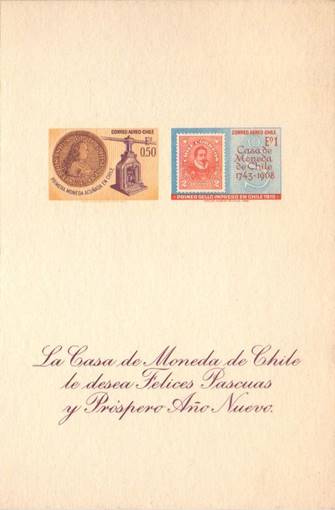
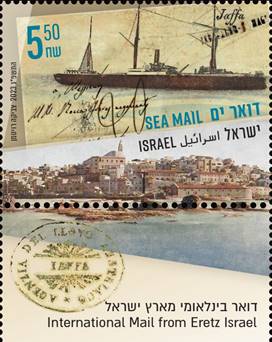
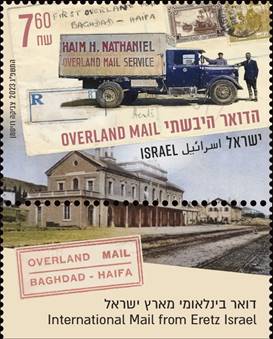
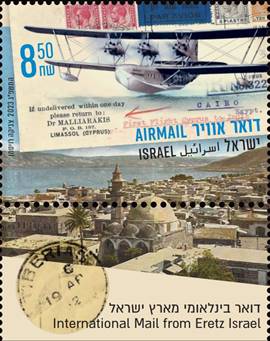
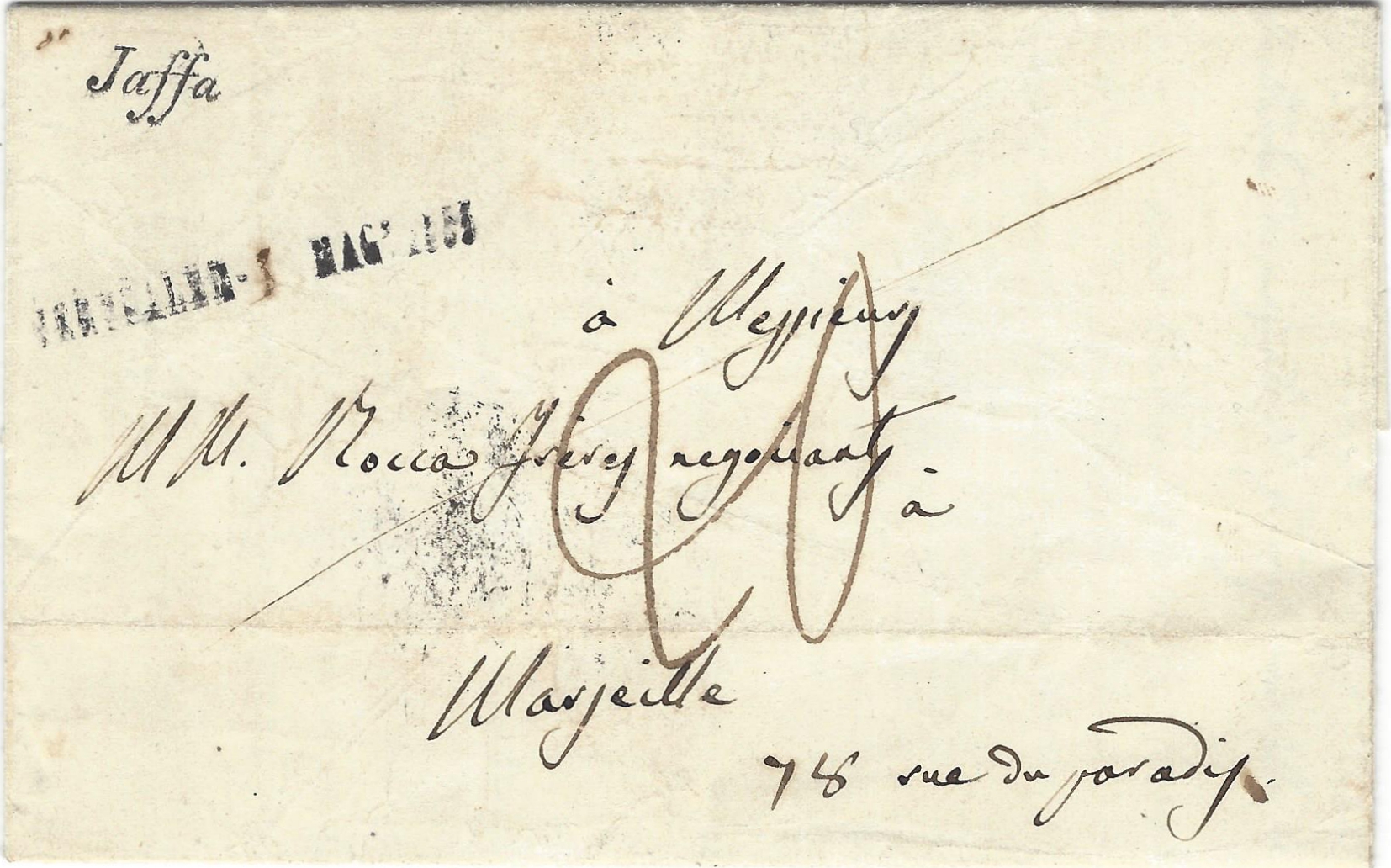
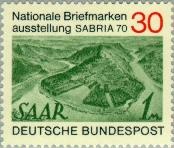


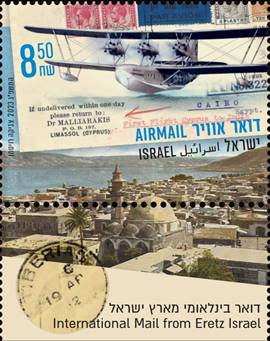
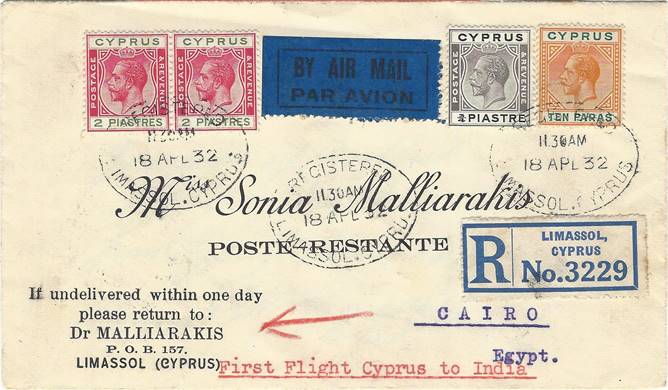
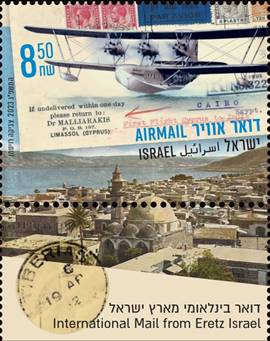
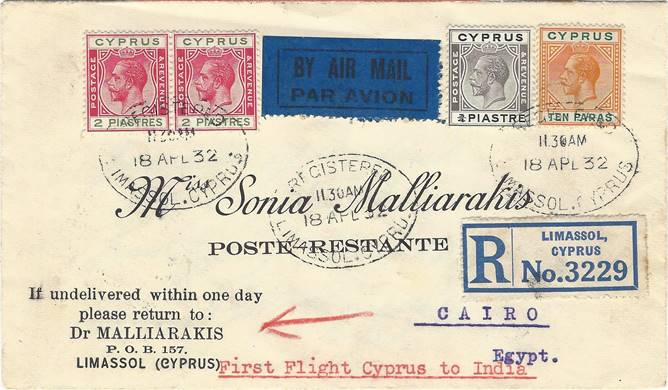

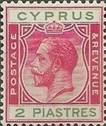
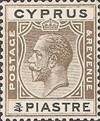
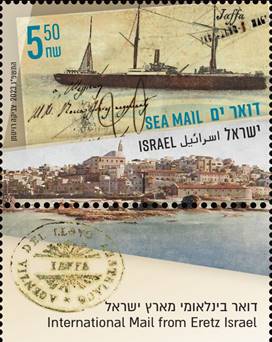
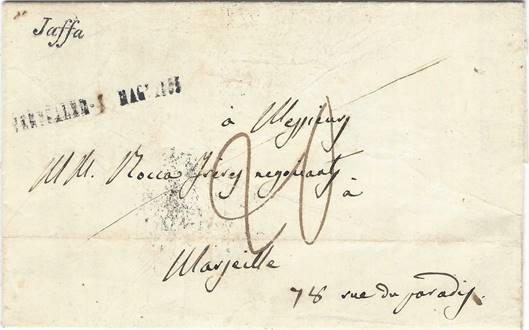

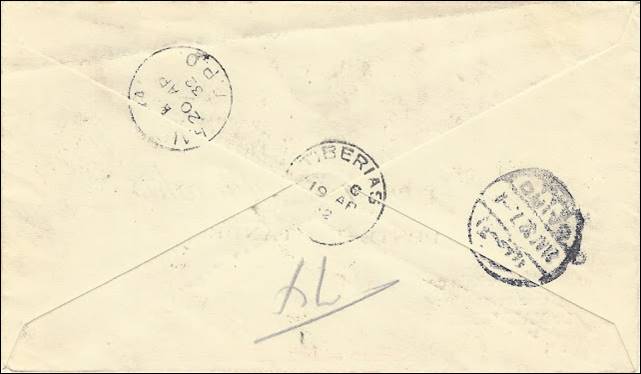
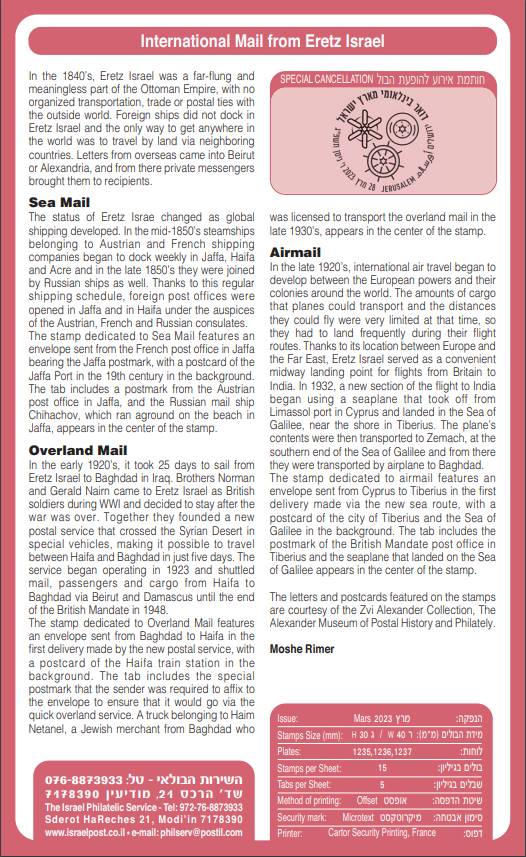
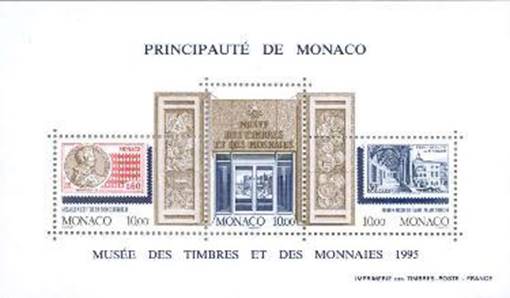
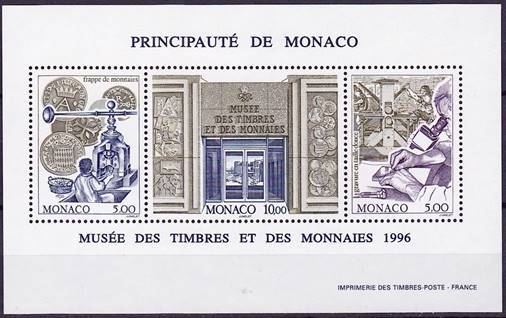
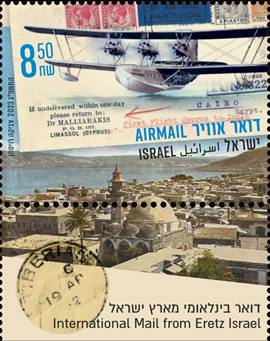
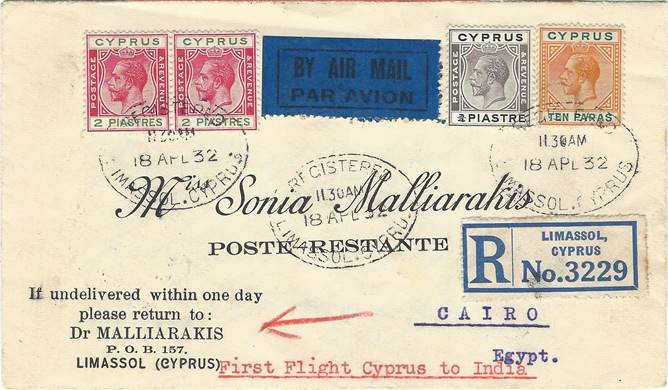

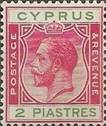
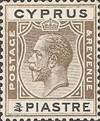

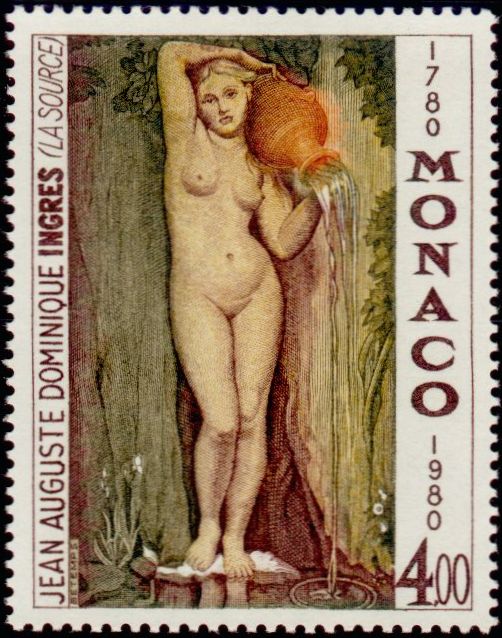



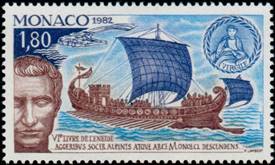
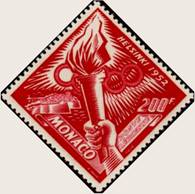

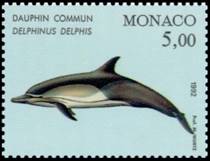

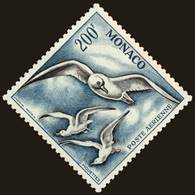
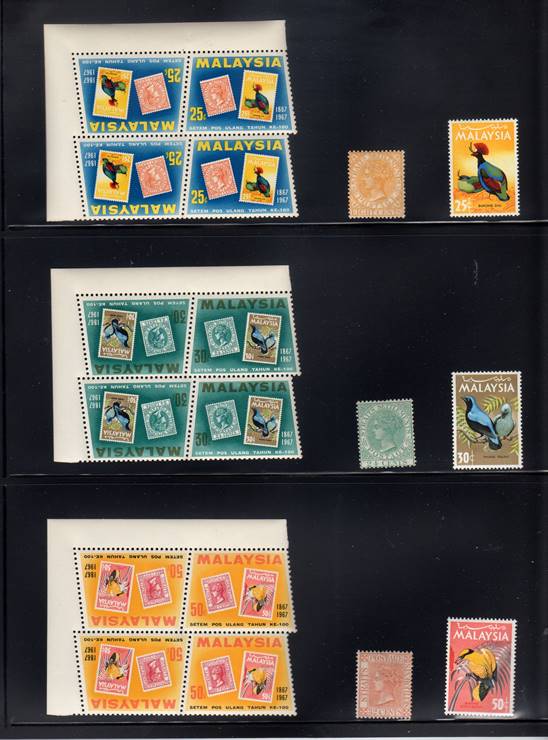
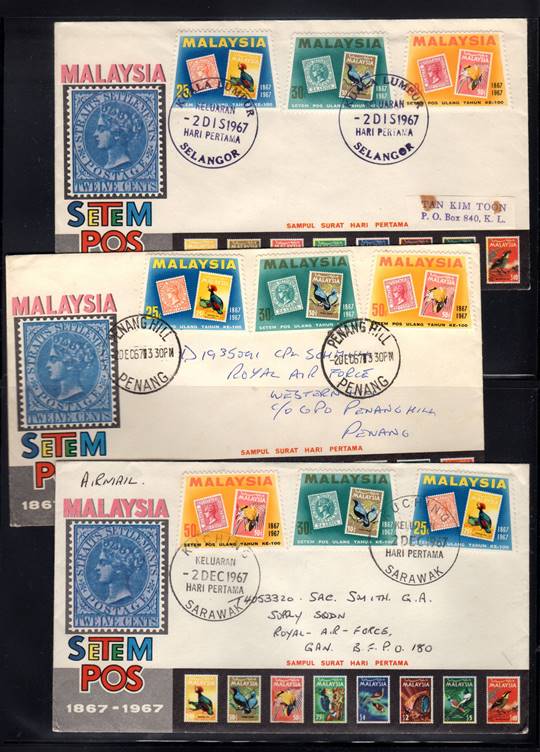
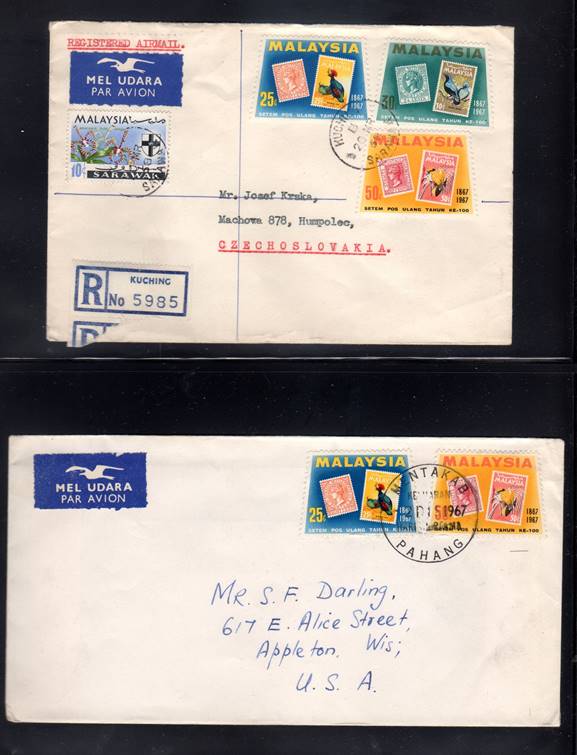


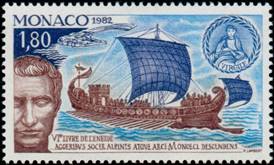
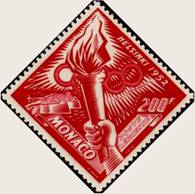
![[The 50th Monte Carlo Rally, 1982, type BGB]](The%20first%20page_image090.jpg)
